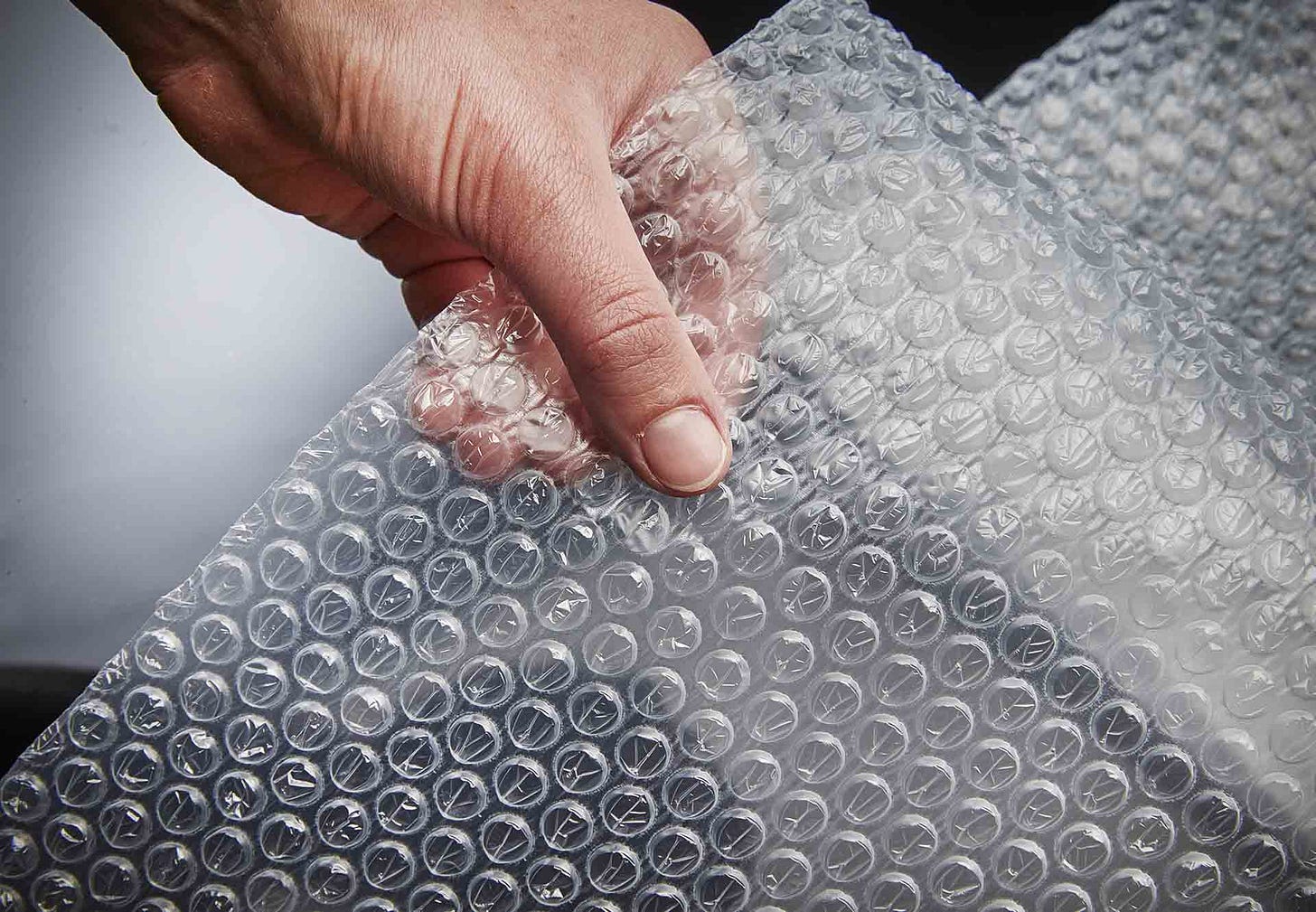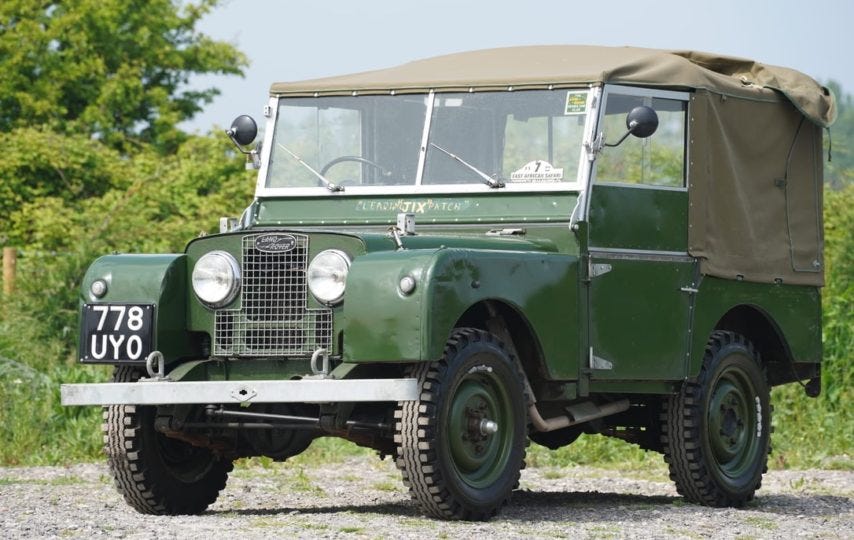#69 Keep going!
The surprising histories of Bubble Wrap and Land Rover
This week we’re looking at designs that started out life in quite a different form. From the surprising origin story of bubble wrap, to the reinvention story of the Land Rover. Don’t give up! Here’s to designs that pushed on. 💪
✨Enjoying Design Lobster? Please share it with a friend, colleague or fellow designer.
Question: Who invented Bubble Wrap?
In 1957 Alfred Fielding was working in Hawthorne, New Jersey with his business partner Marc Chavannes – a chemist originally from Switzerland. At that time, textured wallpaper was just beginning to come into fashion, and they had an idea to make a new variety by running two pieces of shower curtain through a heat-sealing machine. Initially they were disappointed, the resulting sheet of film was filled with bubbles that were easy to pop and so the material didn’t work as a wallpaper. Nevertheless they filed patents for their process and set about trying to find a use for it, exploring applications like greenhouse insulation and cushion stuffing.
The revelation came in 1961. In that year IBM released its 1401 computer unit and was in need of a way to protect each device during shipping. Alfred and Marc realised that their newly branded Bubble Wrap did a vastly better job of protecting items from bumps and scrapes than existing packing solutions – which back then was mainly old newspaper. A contract with IBM paved the way for other business to start using the material and the company grew to billions of dollars in sales over the following decades.
I’ve always believed it’s important to have good peripheral vision as a designer, since often the true value of the things we create isn’t immediately obvious. Keeping an eye on what’s around you can lead to that crucial connection that unlocks its real utility.
Design takeaway: Is the true value of your design hiding just around the corner?
🏭 Watch a visit to a Bubble Wrap factory
Object: Land Rover Series I
Before the Second World War, Rover built luxury saloon cars – the favourite of aristocrats and government ministers. In 1945, as the company looked to the future, they had grand plans to return to this business. Rationing of key materials however was still in full force, and so when the British Government told them they would only be allowed enough steel for 1,100 luxury cars a year they realised they would need to invent a new vehicle to stay profitable and keep their factory in Solihull open.
The Chief Designer at Rover at that time was Maurice Wilks. He had a farm on in Anglesey, Wales where he had been using an ex-US Army jeep to move things around. He set his team the challenge of creating a better version of this vehicle, giving the engine power take-off among other features to make it a good workhorse for agricultural settings. Given the lack of steel available, they used an aluminium alloy know as Birmabright for the bodywork and even used military surplus paint in a characteristic “cockpit green”.
Launched at the Amsterdam Motor Fair in 1948, the vehicle became a hit with farmers and mining companies, but also with the police and emergency services. They sold 8,000 vehicles in their first year. Maurice and his team’s radical redefinition of the Rover brand had paid off – the basic design of the Series I lived on until 2016.
Design takeaway: Could you redefine the brand you are working for through a new design?
🔊 Listen to a podcast with Massimo Frascella, Land Rover’s current Creative Director
Quote: “If you think good design is expensive, you should look at the cost of bad design.”
– Ralf Speth, former CEO of Jaguar Land Rover
This week’s quote comes courtesy of Ralf Speth, who lead Jaguar Land Rover from 2010-2020 and made the case for increased R&D at the company. Ralf articulates a truth that lots of designers know instinctively—that skimping on design at the beginning of a project always leads to costs further down the line.
Have a great week,
Ben 🦞
Enjoyed this week’s Design Lobster? Let me know by clicking the heart button.
👇




Great stories about bubble wrap and Land Rover - each making a different point. My only quibble is that the Land Rover picture is a Series 2 not Series 1.